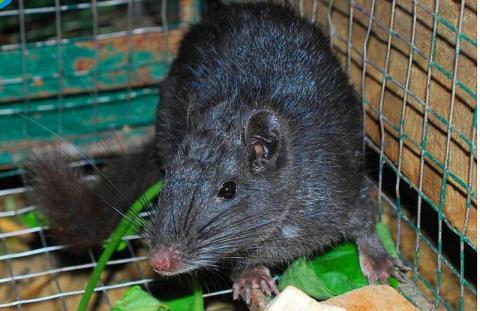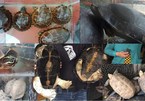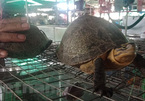The national park’s deputy director Dinh Huy Tri has confirmed the existence of a small animal species which is believed to be the ‘lineage’ of the animal thought to be extinct 11 million years ago.

This "living fossil" is Truong Son Rock Rat, whose scientific name is Laonastes aenigmamus, belonging to Laonestes genus. It is the only living representative of the ancient family Diatomyidae, thought to be extinct.
The discovery of Truong Son, or Annamite Rock Rat, was made in 2011 when the Phong Nha – Ke Bang National Park was expanded. In 2012, scientists recorded the lineage of this rock rat.
The important discovery of Truong Son Rock Rat shows the biodiversity of the national park and the world. The animal not only lives in Laos, but also in Vietnam.
| After the Phong Nha – Ke Bang National Park expanded, scientists discovered a mammal species believed to be extinct 11 million years ago. |
With the discovery, the list of animals in Vietnam has been extended with 322 species.
Truong Son Rock Rat belongs to the same genus with Laotian Rock Rat which was discovered by two scientists M.F. Robinson and R.J. Timmins of FFI (Fauna and Flora International).
In 2000, the two scientists collected 12 samples of a special rodent. The samples were sent to the Natural History Museum for analysis.
The team of researchers led by Paulina D. Jenkins decided to list the animal in a new family (Laonestidae), new genus (Laonestes) and new species (Aenigmanus) with the English name Laotian Rock Rat, in 2005.
One year later, the research team led by Dawson compared the morphological characteristics of this new animal with ancient rodent fossils. They discovered that the Lao rock rat is the only living representative of the ancient Diatomyidae family that became extinct 11 million years ago. Therefore, Lao Rock Rat is considered a "living fossil" of the Diatomyidae family.
In September 2011, FFI stated it discovered Laotian Rock Rat in the mountainous areas of the Phong Nha – Ke Bang in Thuong Hoa commune of Minh Hoa district in Quang Binh province.
However, after xperiments, the research team affirmed that the rock rats in Phong Nha – Ke Bang belong to a new species, though they also belong to the same genus – Laonastes.
Therefore, Vietnamese scientists call the mysterious rock rats Annamite Rock Rat to mark the difference. They believe that Laonastes aenigmamus is an example of the so called ‘lazarus effect’ of Diatomyidae family.
Annamite Rock Rat is the rat that the local Ruc ethnic minority people cook and eat when they lack other kinds of food.
Thanh Lich

Red Book animals in danger, turtles threatened with extinction
Of hundreds of Red-Book wildlife species on sale nationwide, turtles are the most wanted species.

Wild turtles under threat of extinction
Many species of rare turtles are in danger of extinction due to illegal trading in Vietnam.
 After the Phong Nha – Ke Bang National Park expanded, scientists discovered a mammal species believed to be extinct 11 million years ago.
After the Phong Nha – Ke Bang National Park expanded, scientists discovered a mammal species believed to be extinct 11 million years ago.